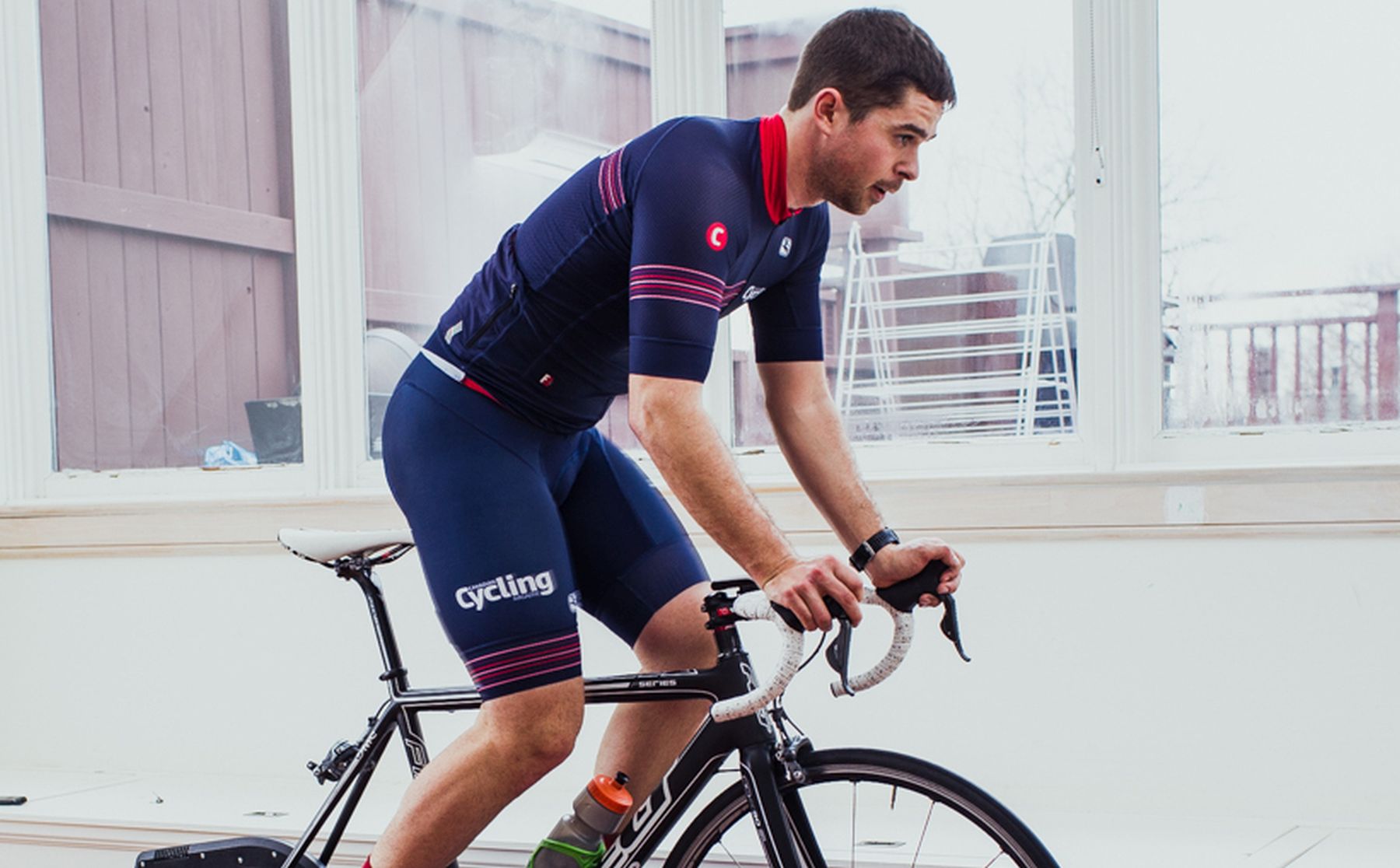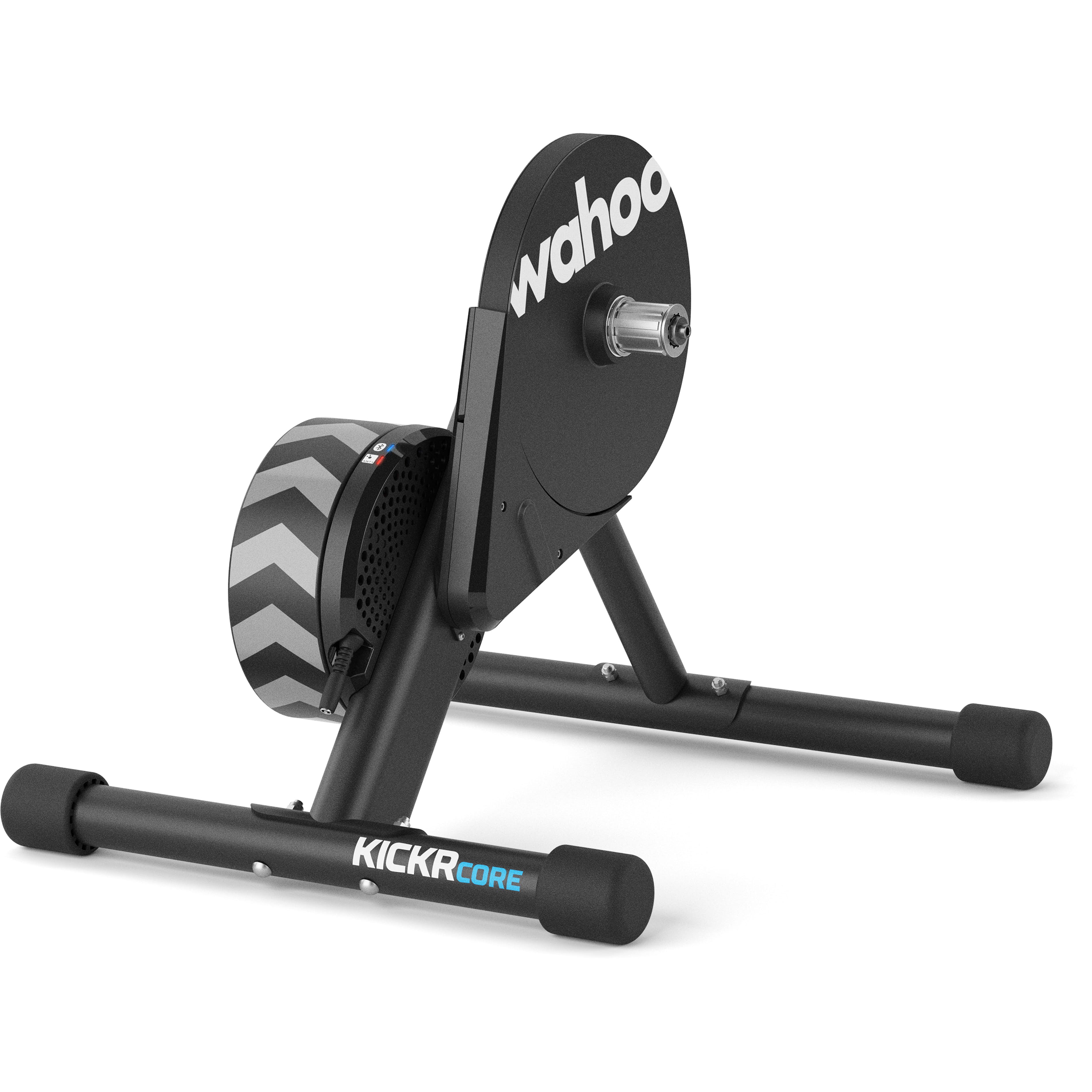The training you do indoors pays big dividends once you move your riding onto the road. Whether you are looking to maintain your summer fitness during the off-season, build new strengths by adopting a more structured training regime or simply keep motivation throughout the colder months, riding on the trainer can benefit your cycling greatly. If you are looking to jump right into indoor riding, MEC carries smart trainers from Elite, Wahoo and Tacx that make riding in the virtual world of Zwift easy to do.

Following Week 1 and Week 2, Canadian Cycling Magazine
Canadian Cycling Magazine will feature training plans that will help you build your base during the off-season. It’s a great plan that can work for a range of riders. If you’re a novice who wants to build fitness throughout the winter so you can keep up on group rides in the spring, you’ll want to check this out. Maybe you’re a more experienced rider who wants to arrive at an early-season camp ready to go. This training plan will work for you, too.
The workload each week varies between less than six hours to almost seven hours making the training plan not overly burdensome on your schedule. Along with the outline of the workouts, there will be .zwo files that you can download and import into Zwift so you can use the program’s workout mode to accomplish the training plan. Along with the prescribed workouts, we will have a look at a smart trainer that can help you train indoors effectively by linking into a stimulating and engaging virtual-riding experience.
Four-week MEC training plan outline
Training improves your aerobic ability by putting your body through workouts of various durations and intensities. You need to be able to hold steady efforts, respond to attacks with bursts of speed and sprint to close gaps or to cross the finish line first. This four-week training plan is built around long low-intensity base training that will help build the foundation for harder efforts. Some workouts will also focus on anaerobic fitness to build the form for surges and short, intense efforts.
To use this training plan, you will need to find your baseline fitness by doing a functional threshold power (FTP) test. (The classic way to calculate FTP is with Hunter Allen’s method.) The training program is built cyclically so you can run through it as many times as you’d like during the winter. Just make sure to retest your fitness so you can build on the work you’ve already done. The plan starts with a focused on endurance and tempo before gradually transitioning into more intense intervals with a week of recovery.
The four-week MEC training plan started with Week 1, focused on tempo and endurance, and Week 2, focusing on aerobic ability.
Week 3
Overview
6:40 hours
Approx. TSS: 390
Week 3 is the toughest week. It’s all about intensity and developing top-end power. It’s not as important in the winter to have a gut-busting sprint or your best-ever, one-minute effort, but it’s still important to keep your legs sharp and snappy.
Monday – Rest
Monday is going to be a rest day. Take a day off, or ride easy in Zone 1 for a maximum of 40 minutes. As we’ve said before, rest days are a good time to spend 25 to 30 minutes doing some core-strength work off the bike. Planks, side planks, crunches, mountain climbers, bicycle crunches and leg raises are all great movements that will help strengthen and develop your core. Don’t be afraid of doing some push-ups.
Tuesday – Threshold Efforts
64 minutes
We’ll start this week by spending some time working at or near FTP. There are more effective ways to improve FTP, such as the sweet-spot work we did in Week 2, but these challenging threshold-effort workouts help develop fatigue resistance and build mental strength. (Download the Week 3 Threshold Efforts .zwo file here.)
Wednesday – Zwift Race using the Zwift Event module
Time: 40-60 Minutes
Use the Zwift Event module to pick a race that is approximately 40 to 60 minutes in length. Warm up with 20 minutes of easy riding that incorporates two to three hard efforts lasting no more than one to two minutes. Cool down afterwards with 10 to 20 minutes of easy spinning.
You should be getting the hang of effort management now. You’ve had some practice in races and in our free-ride workouts. During this day’s race, whatever group you end up in, try to attack the bunch. The Zwift draft physics make it very hard for a solo rider to escape the pack, so the key to an attack is splitting the group on a climb. Push yourself and try to be the one to dictate the race. Don’t be afraid to blow up. These are just practice races.
Thursday – Moderate Tempo
Time: 65 minutes
Harder workouts require more recovery time. Instead of the usual hard workout, we’re going to take it a little easier and do some low tempo/endurance work today. We have VO2 max workouts coming up on Saturday so the legs need to be fresh. (Download the Week 3 Moderate Tempo .zwo file here.)
Friday – Rest Day
Rest day. No workouts. Try to avoid any physical activity today. Rest as much as you can.
Saturday – VO2 Max Over/Unders
Time: 48 minutes
Over/unders are a staple workout. You’ll find yourself undulating between just above threshold, tapping the bottom end of Zone 5, and just below threshold. This a tough workout, not too long, but very effective. (Download the Week 3 VO2 Over/Unders .zwo file here.)
Sunday – Zwift Endurance
Time: 150 minutes
For this workout, do a free ride within Zwift for 150 minutes. Whatever course is available on this day (Richmond, Innsbruck, Yorkshire or London, and the always-available Watopia), pick a hilly route (but not the Epic KOM or Volcano climb) and ride a steady endurance pace targeting the full range of Zone 2.

Wahoo Fitness Kickr Core Smart Trainer
Like Wahoo’s flagship Kickr, the Kickr Core packs a solid combination of realistic road feel, accurate power data and widespread compatibility.
The Kickr Core maintains the Kickr’s +/- 2 per cent power reading accuracy and direct-drive mount to make sure you measure every watt you put into your workouts. It has all the same wireless compatibility, including ANT+ FE and Bluetooth Smart, meaning you can both track your training on your head unit and let your training app control your workout.
All this comes in a slightly smaller package, with a lighter, but still substantial 5.4-kg flywheel. The Core also drops the cadence metric that is on the top-end Kickr.

With the Kickr Core, you get access to the wide-range of Wahoo compatible indoor training apps, including Zwift, Sufferfest, Strava Summit, TrainerRoad, Rouvy, FulGaz and more. The Kickr Core can also be combined with Wahoo’s Kickr Climb and Kickr Headwind, both sold separately.
Wahoo’s Kickr Core can simulate slope as steep as 18 per cent, with a maximum power wattage of 1,800 W, sure to satisfy all but the strongest sprinters. The Wahoo Kickr Core freehub is compatible with Shimano and SRAM cassettes, from 8–11 speed drivetrains. It works with 130-mm and 135-mm quick-release axles and 12 x 142 mm and 12 x 148 mm axles. Wheel sizes from 24″ to 650c, 700c, 26″, 27.5″ and 29″ all work with the Kickr Core.




